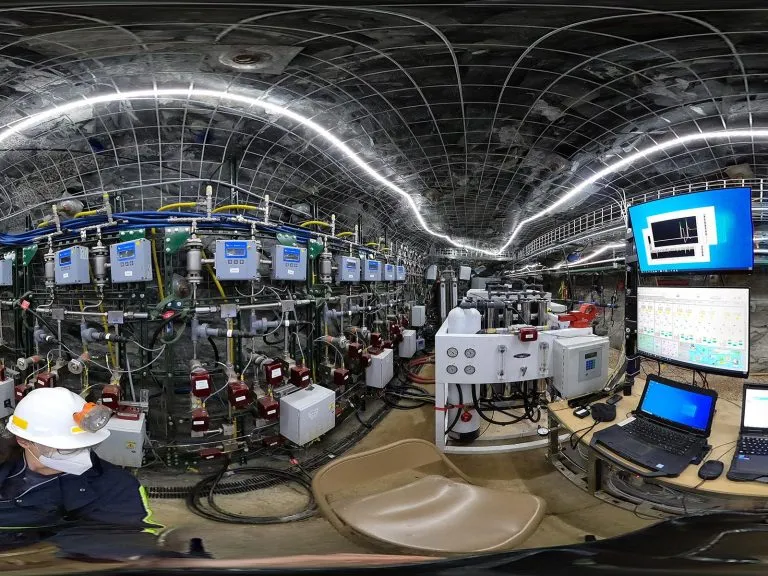A team of scientists assembled a premier system to help them understand how to use energy from deep underground The stimulation and flow system is the latest "rock star" of the Pacific Northwest National Laboratory (PNNL) and its partners to study how water passes through extremely hot rocks underground and then transfers heat to the ground.

The new system is part of an enhanced geothermal system or EGS partnership project involving several national laboratories, universities and industrial partners working to improve geothermal technology.
Several components, a unique system
Once considered the largest and deepest gold mine in North America, it is now used for various scientific purposes. One of the projects is studying how geothermal energy will one day power 10 million homes.
The EGS cooperation project uses the underground facility as a test bench, and water and other fluid mixtures will be pumped under high pressure into one of the five boreholes - a four inch wide "tunnel" drilled in rock, and then pumped out of the other boreholes. The team is studying how these liquids not only decompose rock between boreholes, but also obtain heat from the energy stored in the rock - which can eventually be pumped to the ground to generate electricity.
In order to support the efforts of EGS cooperative project, the team developed this system, which is composed of several instruments that are crucial to their research.
"What's unique about this system is that it integrates multiple components needed to collect important data for geothermal research into one system," said PNNL scientist Chris Strickland, who is the co leader of the simulation and mobility team of the EGS cooperation project. "This does not exist elsewhere."
These components include two syringe pumps, which can inject liquid into the rock under high pressure. One pump can be used for very precise flow and pressure control, while the other pump can be operated when high flow is required.
A fluid cooler produces cold water so that the research team can study how the water temperature affects the thermal properties of rocks. A group of researchers who study the salinity of a liquid or inject water into a system to change the salinity of the liquid.

The system also includes a set of five "packers" inserted into the borehole. These packers are equipped with sensors to provide temperature and pressure measurements. The pressure bag on the packer seals the drilling hole together with the control pump to prevent leakage of the predetermined drilling part.
The level of precise control and integration is a unique aspect of the system, providing the high-quality data needed to advance scientific understanding.
"The best part is that the system is autonomous, which means we can use our home laptop or phone to operate it and collect data on the ground," Strickland said. "In this way, we won't spend so much time underground."
Go deep underground and do it in pieces
"We first assembled and tested the system in a laboratory on the ground to ensure that everything works properly," Strickland said. "Then we take it apart and use 4 × The 4-foot pieces travel a mile underground, transport them to our underground site with railcars, reassemble the system and test it again. "
The complete system, 7 feet high, 7 feet wide and 30 feet long, took three weeks to build underground. The system was built and tested by PNNL and EGS partners from Sandia National Laboratory, Idaho National Laboratory and Lawrence Berkeley National Laboratory.
Strickland added: "one might think it would be uncomfortable to work in a seven foot tunnel a mile underground. However, air is constantly pumped from the surface to keep the tunnel at a constant temperature of 70 degrees Fahrenheit and provide fresh breathing air. The working days are long, starting at 6:30 a.m. and ending at 6:30 p.m., with only limited opportunities to return to the ground."
EGS collab's infrastructure and research are supported by the geothermal technology office of the U.S. Department of energy. The system will provide data for many months or even years. The discovery of the project will help develop new geothermal energy technologies for industry.
"Individually, these components bring good and useful data. As a system, the EGS cooperation project will obtain the most comprehensive data to help advance the future of geothermal energy," Strickland said